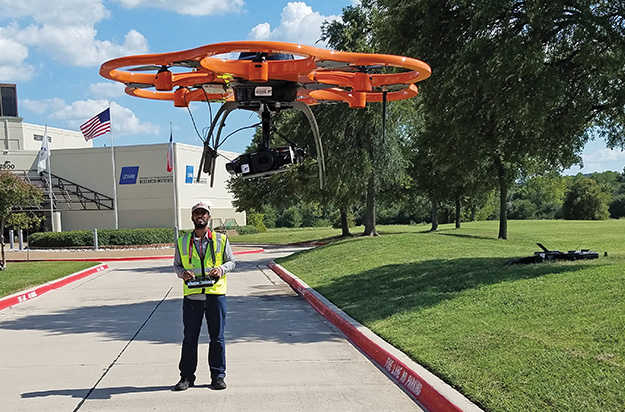Fall 2017: Building Livability
UTA researchers are creating a more sustainable, affordable North Texas for the future.
Skip to content. Skip to main navigation.
UTA researchers are creating a more sustainable, affordable North Texas for the future.
From carbon dioxide conversion to landfill mining, researchers at UTA are seeking viable alternative energy options.
Found in everything from space shuttles to dental fillings, composite materials have thoroughly infiltrated modern society. But their potential is still greatly untapped, offering researchers ample opportunity for discovery.
Within the particle showers created at the Large Hadron Collider, answers to some of the universe’s mysteries are waiting.
Model systems like pigeons can help illuminate our own evolutionary and genomic history.
UT Arlington's tiny windmills are bringing renewable energy to a whole new scale.
The stability of our highways, pipelines, and even manholes is reaching a breaking point.
Scientists believe they have discovered a subatomic particle that is crucial to understanding the universe.
UT Arlington researchers unlock clues to the human body’s most mysterious and complex organ.
UT Arlington researchers probe the hidden world of microbes in search of renewable energy sources.
Wounded soldiers are benefiting from Robert Gatchel’s program that combines physical rehabilitation with treatment for post-traumatic stress disorder.
Tiny sensors implanted in the body show promise in combating acid reflux disease, pain and other health problems.
Nanotechnology researchers pursue hybrid silicon chips with life-saving potential.
Biomedical engineers combat diseases with procedures that are painless to patients.

Using flying machines to inspect the ground? That's what a team of engineers from UTA, Texas A&M University at Corpus Christi, and the Texas A&M Transportation Institute is doing for the Texas Department of Transportation. The agency awarded the group a two-year, $770,909 grant for the project.
Led by civil engineering Professor Anand Puppala, the researchers are investigating highways and railroads through unmanned aerial vehicles, or UAVs. They will determine how to use UAVs to perform remote sensing and collect high-definition photos while conducting pavement forensics. The team is focusing on the U.S. Highway 67 project site in Cleburne and U.S. Highway 82 near Bell in Fannin County. The UAVs also will collect data on the condition of railroad tracks and crossings in south-central Texas.
"It is safer and less expensive to use a UAV to check pavement performance characteristics because there is no need to close lanes and a person doesn't have to be on a roadway or active railroad tracks," Dr. Puppala says. "The high-resolution photos that we receive will provide as much information as an instrument on the pavement."
In addition to safety and cost, speed is another advantage to using UAVs instead of people.
"We will be able to transmit data from the UAV to a computer and process images very quickly," Puppala says. "We can then provide analysis within hours so TxDOT can make decisions immediately."
This research recently led to an additional NSF grant for remote surveys of debris in Houston after Hurricane Harvey.